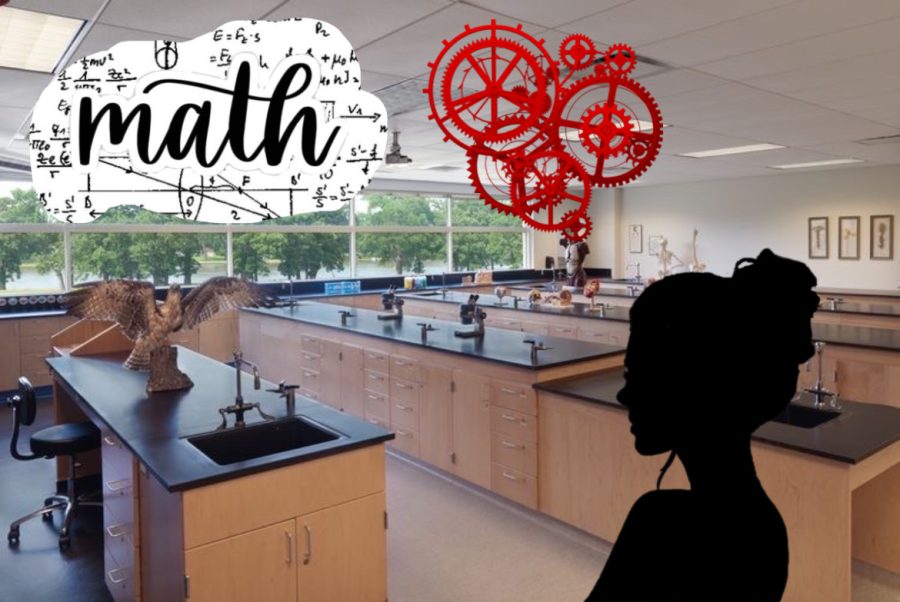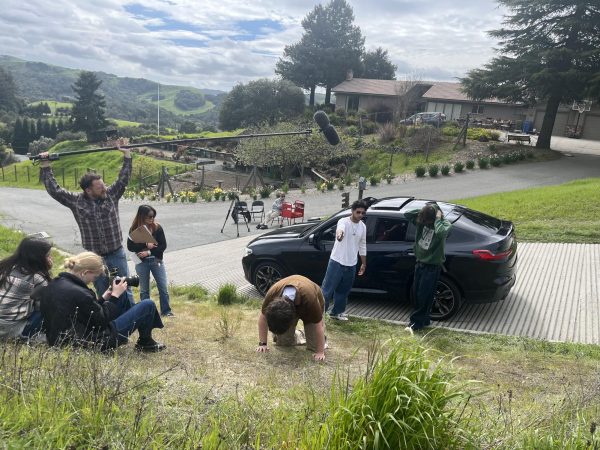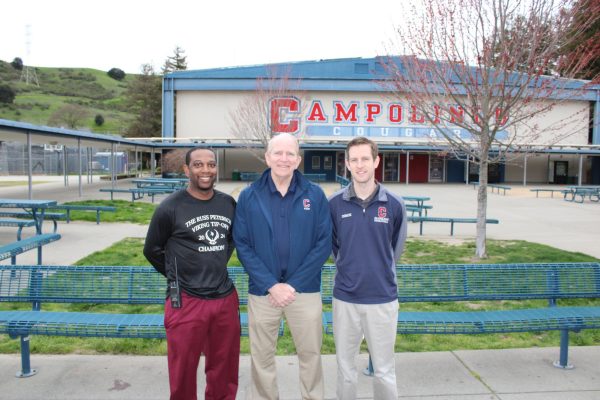Lack of Community Deters Women from STEM
Not having the support of a community has caused some women to be at a disadvantage in STEM.
It’s no secret that advocacy for women in STEM (science, technology, engineering, and math) has risen in the recent decades, but there are still gender biases deterring women. At a Girls Who Code club meeting last month, I experienced at least three Campo girls talk about the STEM related discrimination they experienced, mostly here at Campo. This frustrated me and showed that despite promises of belonging, biases still slip through the cracks.
According to the American Association of University Women, women only make up 28% of the workforce in STEM despite women making up 49.6% of the population and 46.6% of the general workforce in the US, according to Zippia. One of the reasons women tend to steer away from STEM subjects during school years is because of the lack of a supportive community they face, making women feel like they don’t belong in the field.
Having a supportive community is important for social change because it establishes a sense of belonging, which is crucial in scenarios like these. Once someone has a community they are a part of, it becomes less tempting for them to leave, which translates to more women in STEM.
It is important for there to be more women in STEM because improving the diversity in the workforce increases the perspectives and ideas introduced, which gives a company a competitive advantage in their respective market.
STEM fields have traditionally been dominated by men, which creates an invisible barrier for women that blocks them from entering. Combined with a lack of role models and implicit biases, again from the history of male domination, it becomes obvious why there aren’t many women in STEM.
And for the women that do make a career in STEM? 40% of them leave that occupation within the first 5 years and of those, 69% blame it on a toxic work environment, as cited by Landmark Ventures.
A study by First Citizens Bank found that 91% of women in STEM careers face gender discrimination during their careers and 73% experience sexual harassment. This type of behavior, probably from other colleagues and managers, is harassment no woman should ever face, whether in STEM or not. If you were a young girl hearing about this, wouldn’t you want to steer away from STEM as well?
Amelia Gulling, working with Battle Bots Foundation and the Robotics Education & Competition Foundation, recalls in board meetings from her previous job how she was asked by the other members, men, to take notes or get coffee. She was presumed to be the secretary, despite having more power than half the people in the room, primarily because she was the only woman. This is only one example of subtle discrimination, but hurts just as much, if not more, than outright harassment and ruins relationships between colleagues, also ruining any sense of community.
But the discrimination against women isn’t just in the corporate world; it stems from the educational level. Junior Anna Chen who is interested in computer science found that “one thing I struggled with was really connecting with my peers.” Chen explained that “in my APCSA [AP Computer Science A] class, there was a really big gap between the girls and the guys…there were three girls in our class and 20 guys, and it was really disheartening for me.” Chen stated that she felt empowered after attending a Girls Who Code summer program where “everyone there was a girl or non-binary,” showing the importance of having peers like you.
Another example is in my AP Physics 2 class, where out of around 20 students, only 3 are girls, including myself. While this isn’t an outright form of discrimination, it made me feel disconnected from the rest of my peers and decreased my motivation to get involved in the class, which ties into the broader theme of a lack of community.
In order to create a welcoming environment for STEM starting in the early ages, women need to have a community they can rely on. Gulling recalls a time when she sought advice from other female and even male mentors to help her navigate the path of how to be a woman in STEM, showing just how impactful a community can be for someone young. And if she hadn’t sought that advice? Perhaps Gulling would’ve joined the 40% who left STEM. But we’ll never know what would’ve happened, because she was able to find people she could rely on.
Gulling also thinks it would be better to get girls and other underrepresented groups involved in STEM from a younger age because by showing them they belong in the space, they are less likely to doubt themselves later, translating to more women in STEM.
Chen expressed that younger girls in STEM shouldn’t “be afraid of the other people in your class and not to feel inferior…you are just as deserving of a good education as everyone else is and so if you are ever turned down because a teacher doesn’t think you’re fit for a class, prove them wrong, and be in that class.”
Similarly, Gulling recalls a piece of advice she received recently to “stop thanking people for a seat at the table because that seat belongs to you and you deserve to be there.” Gulling expressed how she was “just so grateful to have a seat at the table,” that she didn’t think she really deserved to be there, indicating unconscious biases even in women, which is what made those words resonate.
I know I’m not the only person who is frustrated by the charts showing the percentages of men vs women in the STEM workfield, but this issue with discrimination in STEM is not just against women. It’s against all underrepresented groups, people of different races, backgrounds, socioeconomic statuses, and more. The invisible barriers preventing them from being in the STEM field must be broken down, not just for diversity but for the well being of the field, and one way to do that is to form a supportive community.
Your donation will support the student journalists of Campolindo High School's The Claw. Your contribution will allow us to produce more issues and cover our annual website hosting costs.

(she/her)
Senior Lily Qin has always been creative. From a young age, she was involved in various creative pursuits such as ballet and music, and now,...

Senior Dara Kashayar has a love of traveling. As an avid traveler, Kashayar has spent time in many countries across the globe.
Spending time around...







